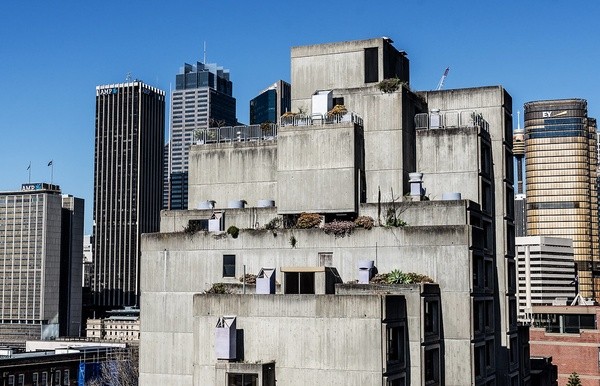By DANIEL LO SURDO
Leading housing experts have become increasingly concerned with the housing structures propelling homelessness patterns in the inner-city.
On any given night in Australia, over 120,000 people will be separated from secure housing, shelter and safety. Closer to home, it’s estimated that there are over 250 Sydneysiders forced to journey the side streets and alleyways of the city each night, with funds for backpacker accommodation scarce and dreams of a home fleeting.
But the patterns and conventions of homelessness are changing.
Definitions have expanded in recent decades to incorporate the wider constructs influencing homelessness to support those once regarded as provisionally occupied or semi-homeless.
What was once considered to be a displacement from shelter has now included separation from security and spirituality, as depicted by Abraham Maslow in his hierarchy of human needs.
In the inner-city, those conditions are too often failing to be met.
One of the three key stipulations that the Australian Bureau of Statistics use to define homelessness is if a person in their current living arrangement “is in a dwelling that is inadequate.”
It’s a specification that Shelter NSW CEO John Engeler has seen on the rise.
“It’s a revelation to most people that when we talk about homelessness in Australia … the biggest single category of homelessness and the one that’s growing the most is in what’s called severely overcrowded dwellings,” Engeler told City Hub in June.
“By severe, I mean you need four bedrooms or more, so say if eight people are living in a two-bedroom unit.”
Glebe Youth Services Coordinator Keiran Kevans has seen firsthand the effects of severe overcrowding in the inner-city.
“I’ve known families that sleep in shifts,” Kevans told City Hub.
“It gets normalised … there’s not enough beds so some of them sleep during the day and some during the night.”
State-based influence
Severely overcrowded dwellings usually fall in the private rental market, where tenants struggle to access support and arrangements typically offered with social housing. It’s also a housing structure that’s been put on the backburner in the State’s housing program.
The NSW Future Directions for Social Housing sets out the State’s 10-year vision to reduce homelessness and provide more housing and support for those at risk of displacement, to either divert people from or successfully transition people out of the social housing system.
As part of the plans, the City of Sydney Local Government Area will undergo a colossal transformation; existing public land will be used to deliver 3000 new, privatised dwellings as part of the State’s $22 billion Communities Plus program, whereby 70 per cent of social housing would be shifted across sectors to deliver an uptick in both public and private dwellings.
Engeler worries that the focus towards high-density residences will leave those in severely overcrowded dwellings increasingly marginalised from support.
“The NSW Government does not have a very big or firm program to deliver 5, 6, 7 bedroom dwellings … and yet we know that that’s a big and growing area of worry,” Engeler said.
City Hub understands that the 70:30 Communities Plus model has stemmed from the Land and Housing Corporation’s requirements to function on a revenue-neutral model, where the State’s most valued land can be cannibalised so social housing redevelopments incur minimal cost.
An inequitable inner-city
With pockets of disadvantage and wealth disparity growing within the inner-city, Kevans believes the State’s model mustn’t be accepted.
“It’s getting harder and harder for people from lower socioeconomic backgrounds to access rentals and move into a position where they can buy their own home,” Kevans said.
“There’s just nowhere for them to go – you end up with existing family homes that become overcrowded because it’s very difficult for young adults to find their own accommodation.”
Kevans believes the State should be held accountable for providing more support to prospective tenants.
“The onus is on the Government to create mechanisms for enabling affordable housing in our cities,” Kevans said.
“It’s not just young people who have come up through social housing, we’re talking our nurses, our first responders and people in service industries and restaurants who get priced out of the housing market.”
With many estates in desperate need of repair, there is a belief that access to affordable dwellings may only be the beginning of fixing the housing crisis in the inner-city.
“Not only do we have a shortage of public housing, but some of the housing that we have is badly neglected,” Kevans said.
“I’ve seen examples of housing that is really borderline unfit for habitation – we’re talking mould, unsecured buildings without locks on the front doors or windows, leaky pipes where the residents have to pay for excess water bills, so I think it’s not only overcrowding but in some instances, it’s the very decrepit state of neglected public housing.”
Gauging severe overcrowding will be included in this year’s Census questions, with results expected to display a considerable rise in the category. Census night will be the 10th of August this year, with the release of the 2021 data expected to be released from June 2022 onwards.
April 23, 2024 |
Staff Writer
April 19, 2024 |
Staff Writer
April 18, 2024 |
Staff Writer
April 12, 2024 |
Staff Writer
April 11, 2024 |
Staff Writer
April 11, 2024 |
Grace Johnson


